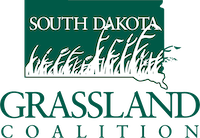in 2022
It is not hard to find a ranch mentor who is feeding the soil to create more productive rangeland. Glenn Elzinga, Bob Kinford, and Gabe Brown are just a few of the growing group of `healthy rangeland` advocates. All three mentors practice Holistic Resource Management.
Glenn Elzinga
featured speaker at the Grassland Coalition annual meeting in December of 2021
His Idaho family ranch has followed the “feed the soil first then increase stocking rates”, rule since he bought the ranch in 2005. For three hours Glenn explained how his soil has improved each year. As soil organic matter has increased, water is now staying in the soil longer. “Long rest periods have been the key”, Glenn says, “to build soil health on his low rainfall unirrigated range”. On the irrigated range, they make 4-6 passes through the pastures each summer while building soil organic matter. His dryland pastures produced above average in 2021 during a low rainfall year.
How do all of us take this information and apply it to our ranches?
Consider the line graph showing unhealthy soil on the left and increasing healthy soil on the right. We all fall somewhere on this line.

The key to learning how to increase stocking rates in a regenerative manner is learning how to make pasture soil healthier. This is accomplished by resting the plants after being grazed. By rotating the cattle through pastures the plants are allowed to recover and leave dormant plant matter on the ground for the soil bugs to consume. This process creates organic matter in the soil. Over time, a properly managed rotationally grazed pasture will increase organic matter compared to a season long grazed pasture. This brings us to HRM training.
The Grassland Coalition is putting on a three day school in February titled, “Finding the right Balance”. Tara and Joshua Dukart will be teaching Holistic Resource Management (HRM) principles at Drifters Grill in Ft. Pierre. Feb. 15-17. Register by calling or texting, 605 685-3315. More info is available at the Grassland Coalition website, sdgrass.org.
We all have limited resources, so where you are on the line graph is unique to your ranch. Whether it is people, finances, livestock production or the land, where you fall on this line is the result of decisions based on how you apply these ranch resources. Learning how to move to the right on this line graph is what HRM is all about. Once you learn to observe how the land responds to your grazing plan, the plan can be adjusted to increase soil health. Nature will move to a healthier state if we play by her rules. This will mean adjusting management. Holistic Resource Management teaches land managers how to change the ranch management culture in order to play by nature`s rules and increase rangeland production.
In conclusion
Increasing stocking rates must start with healthy soil. This may require a change in the ranch management model and even a change in the ranch culture. HRM is a great way to move forward creating healthy landscapes on your ranch.
Dan Rasmussen is a third-generation cattle rancher living in south central South Dakota. Dan served on the board of the South Dakota Grassland Coalition for 18 years and is currently the education coordinator for the Grassland Coalition.
Source: SDGC Newsletter
